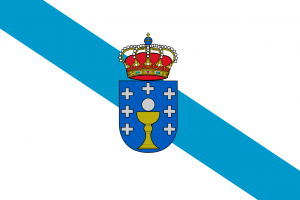Language/Galician/Vocabulary/Numbers-1-10
| ◀️ Basic Sentence Structure — Previous Lesson | Next Lesson — Colors ▶️ |
Introduction[edit | edit source]
In this lesson, we will focus on one of the most essential aspects of learning any language: numbers. Numbers are the building blocks of everyday communication, and knowing how to count in Galician is crucial for basic interactions and understanding. By the end of this lesson, you will be able to confidently count from 1 to 10 in Galician.
Numbers 1-10[edit | edit source]
Let's begin by learning the numbers from 1 to 10 in Galician. Take your time to listen to the pronunciation and repeat each number after me. Pay attention to the unique sounds of Galician and try to mimic them as closely as possible.
| Galician | Pronunciation | English |
|---|---|---|
| un | oon | one |
| dous | doh-oos | two |
| tres | trehs | three |
| catro | kah-troh | four |
| cinco | seen-koh | five |
| seis | seh-ees | six |
| sete | se-teh | seven |
| oito | oy-toh | eight |
| nove | noh-veh | nine |
| dez | dehth | ten |
Now, let's practice using these numbers in context. Repeat each sentence after me:
- Un gato (A cat)
- Dous perros (Two dogs)
- Tres paxaros (Three birds)
- Catro flores (Four flowers)
- Cinco libros (Five books)
- Seis cadeiras (Six chairs)
- Sete xogos (Seven games)
- Oito nenos (Eight children)
- Nove bolos (Nine cakes)
- Dez días (Ten days)
Great job! You are now familiar with the numbers 1 to 10 in Galician. Make sure to practice them regularly to reinforce your knowledge.
Cultural Insights[edit | edit source]
Numbers hold cultural significance in every language, and Galician is no exception. Galicia, a region in northwest Spain, has a unique history that has influenced its language and culture. Galician, alongside Spanish, is an official language of the region and is spoken by millions of people.
In Galicia, numbers play a role in traditional customs and folklore. For example, the number seven is considered lucky in Galician culture, and it is believed that if you find seven chestnuts in a single shell, it will bring you good luck. Similarly, the number three is often associated with the Holy Trinity and is considered a sacred number.
Galician numbers also reflect the region's Celtic heritage. The Celtic influence can be seen in the pronunciation of numbers, with certain sounds resembling those found in other Celtic languages.
Practice Exercises[edit | edit source]
Now it's time to put your knowledge to the test! Complete the following exercises to practice counting from 1 to 10 in Galician:
Exercise 1: Fill in the missing numbers in the following sequence:
- __, dous, tres, __, cinco, __, sete, __, nove, dez
Solution: un, catro, seis, oito
Exercise 2: Translate the following sentences into Galician:
- I have __ apples. (dous)
- She bought __ books. (catro)
- We need __ chairs. (sete)
Solution: teño dúas mazás, ela mercou catro libros, precisamos sete cadeiras
Exercise 3: Write the Galician word for the following numbers:
- 5: __
- 9: __
- 3: __
Solution: cinco, nove, tres
Well done! You have successfully completed the practice exercises. Keep practicing these numbers to reinforce your knowledge.
Conclusion[edit | edit source]
In this lesson, we have learned how to count from 1 to 10 in Galician. Numbers are an essential part of everyday communication, and mastering them will greatly enhance your ability to interact in Galician-speaking contexts. Remember to practice regularly and incorporate these numbers into your daily conversations. Great job, and keep up the good work!
Videos[edit | edit source]
The Sound of the Galician-Portuguese Language (Numbers ...[edit | edit source]
The Sound of the Galician language (AGAL Norm) (Numbers ...[edit | edit source]
Sources[edit | edit source]
Other Lessons[edit | edit source]
- Geography
- Greetings
- Airport
- Basic Phrases in Galician
- Parts of the Body
- Months of the Year
- Time
- Days of the Week
- Modes of Transportation
- Travel Vocabulary
| ◀️ Basic Sentence Structure — Previous Lesson | Next Lesson — Colors ▶️ |

